Le ragatte sono un po’ offese, questa volta non si parla di loro ma di balene e, addirittura di gatti che non sono loro.
Sono cresciuta in una casa piena di balene, quelle della collezione di iconografia cetacea di mio padre.
La prima volta che ho visto una balena avevo tre anni, era una cosa polverosa e rinsecchita, probabilmente anche finta. Se ne volete sapere di più googlate “balena goliath Roma”.
Poi per un periodo ho lavorato “alle balene” come dice Marito, ovvero per un’associazione che faceva fundraising per istituti di ricerca che si occupavano, anche, di balene. E’ stato in quel periodo che le ho viste per la prima volta in un’area protetta in Mar Ligure: tante balenottere comuni e un bellissimo capodoglio.
Con Marito e abbiamo dedicato molte delle nostre vacanze a loro.
In USA dove abbiamo visto le megattere che fanno le spiritose, in Islanda dove le Minke Whale si vedono dalla costa, in Norvegia abbiamo rischiato il congelamento per seguire un capodoglio, alle Canarie abbiamo visto i globicefali con quelle loro belle capoccette tonde, alle Azzorre abbiamo visto un po’ di tutto tra tursiopi, delfini comuni, megattere, capodogli, balenottere di vario tipo e anche i grampi, i fantasmini dell’oceano.
E così quest’anno abbiamo deciso di tornare proprio alle Azzorre, a Pico -meravigliosa isola vulcanica, un po’ Isla Nublar e un po’ paesaggio scozzese ma con le ortensie - nel cui mare, scuro e spesso agitato, a primavera migrando verso nord passano le balenottere azzurre, che poi in realtà sono grigie, ma sono comunque le più grandi di tutte le balene e di tutte le creature del pianeta.
E così, armati di abiti impermeabili e grandi aspettative il 23 aprile siamo partiti per Pico dove ci siamo affidati ai bravissimi e competentissimi ricercatori di CW Azores - che oltre che ai cetacei vogliono bene anche ai gatti - che ci hanno scarrozzati in giro per l’oceano alle ricerca delle gigantesse azzurre.
Il 29 aprile non era previsto che uscissimo in barca ed eravamo in giro per l’isola tra scogliere laviche e laghetti quando arriva una telefonata: le abbiamo avvistate se siete qui entro mezz’ora si va.
E noi ovviamente ci siamo scapicollati per arrivare entro mezz’ora.
E tra onde e spruzzi d’acqua a secchiate, in un mare decisamente agitato, abbiamo visto la nostra prima balenottera azzurra che ci è sbucata a pochi metri dal gommone.
Era bellissima, era grandissima, vista da sott’acqua era azzurrissima.
Un’emozione gigante, una visione quasi onirica, gioia pura.
E dopo l’emozione però la botta, la “rincarcata”, il crac, perché nonostante il mare agitato e l’appello reiterato: “mettetevi dietro se avete problemi di schiena”, io mi sono ovviamente messa davanti, in prima fila, come una novella capitana Achab, ed è così che mi sono rotta una vertebra.
Del tutto inconsapevole e percettivamente confusa dall’annesso colpo della strega (se non lo avete mai avuto non potete capire) e peraltro ingenuamente convinta che “se non fa tanto male vuol dire che non ti sei rotta niente” ho continuato a fare qualunque cosa e sono anche sono tornata in barca e ho rivisto le azzurre altre due volte: bellissime.
Una volta tornata a Roma però un po’ male continuava a farmi, quindi radiografia, risonanza e diagnosi: frattura disco-somatica e se non bastasse anche edema intraspongioso post-traumatico.
Olé!
E adesso mi tocca stare stesa per almeno un mese e portare un fastidiosissimo busto alla Robocop.
Penso comunque di avere fatto una vacanza bellissima e che se ci riesco tornerò a Pico a vedere le balene con Enrico, Giada, Katharina Joao, Renato, Anna, Beatriz e tutti gli altri.
Magari non mi metterò davanti quando il mare è agitato, ecco, quello magari no, decisamente no.
OF WHALES AND DORSAL VERTEBRAE
I grew up in a house full of whales—those from my father’s collection of cetacean iconography.
The first time I saw a whale, I was three years old. It was dusty and shriveled, probably even fake.
If you want to know more, just Google “Goliath whale Rome.”
Then for a while I worked “at the whales,” as my husband says—that is, for an organization that did fundraising for research institutes, some of which studied whales.
It was during that time that I saw them for the first time in a marine protected area in the Ligurian Sea: lots of fin whales and a beautiful sperm whale.
With my husband, we’ve devoted many of our holidays to them.
In the US, where we saw humpbacks showing off; in Iceland, where Minke whales can be spotted from the shore; in Norway, where we nearly froze chasing a sperm whale; in the Canary Islands, where we saw pilot whales with their lovely round heads; and in the Azores, where we saw a bit of everything—bottlenose dolphins, common dolphins, humpbacks, sperm whales, all sorts of fin whales, and even Risso’s dolphins, the ocean’s little ghosts.
And so this year, we decided to go back to the Azores, to Pico—a stunning volcanic island, part Isla Nublar, part Scottish Highlands but with hydrangeas—whose dark, often choppy waters in spring are crossed by blue whales migrating north. They’re actually grey and not blue, but they’re still the largest of all whales, and of all creatures on the planet.
And so, armed with waterproof gear and high hopes, on April 23rd we set off for Pico, where we put ourselves in the expert hands of the amazing researchers at CW Azores—who not only care deeply about cetaceans, but also have a soft spot for cats. They took us out across the ocean in search of the giant blue ladies.
On April 29th, we weren’t scheduled to go out to sea—we were exploring the island, wandering between lava cliffs and little lakes, when the phone rang: We’ve spotted them. If you’re here within half an hour, we’re going.
And of course, we rushed like mad to make it in time.
And there, through waves and buckets of spray, in a decidedly rough sea, we saw our first blue whale—emerging just a few meters from the boat.
She was beautiful, she was enormous, and from underwater she looked vividly, impossibly blue.
A giant emotion, an almost dreamlike vision, pure joy.
But after the thrill came the crash—the backlash, the crack.
Because despite the rough sea and the repeated warning: “Sit in the back if you have back problems,” I obviously sat in the very front, first row, like a modern-day Captain Ahab.
And that’s how I ended up fracturing a vertebra.
Totally unaware and confused by the simultaneous muscle contraction (in Italian we call it “witch’s hit” if you’ve never experiencedone, you just can’t understand), and naively convinced that “if it doesn’t hurt too much, it must not be broken”, I kept doing everything—including going back out on the boat and seeing the blue giants two more times.
They were beautiful.
Back in Rome, though, the pain didn’t really go away. So: X-ray, MRI, and the diagnosis—disc-somatic fracture and, as if that weren’t enough, post-traumatic intraspongious edema.
Olé!
Now I have to lie flat for at least a month and wear an incredibly annoying Robocop-style back brace.
Still, I think it was a wonderful trip. And if I can, I’ll go back to Pico to see the whales again with Enrico, Giada, Katharina, João, Renato, Anna, Beatriz and all the others.
Maybe next time I won’t sit in the front when the sea is rough.
Yeah… maybe not.
Definitely not.

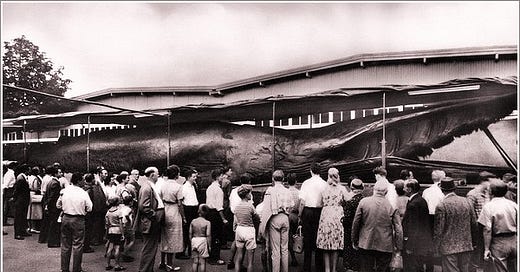



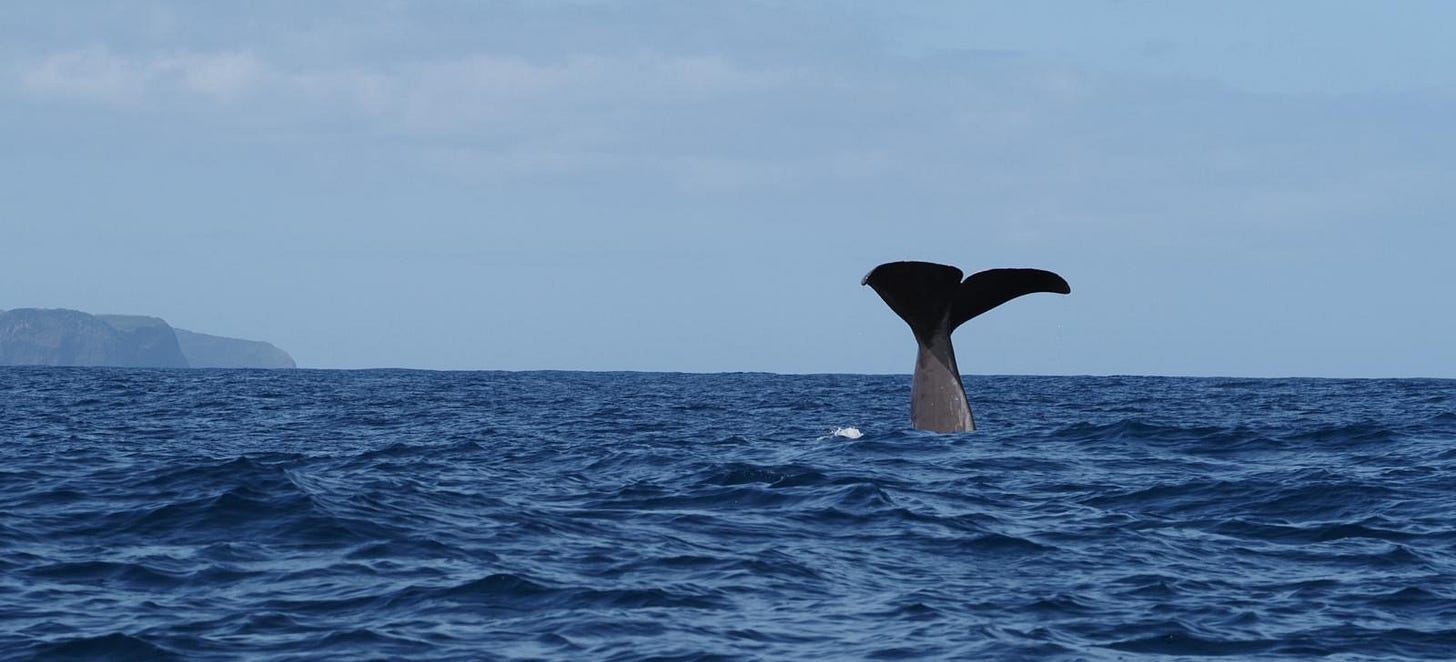
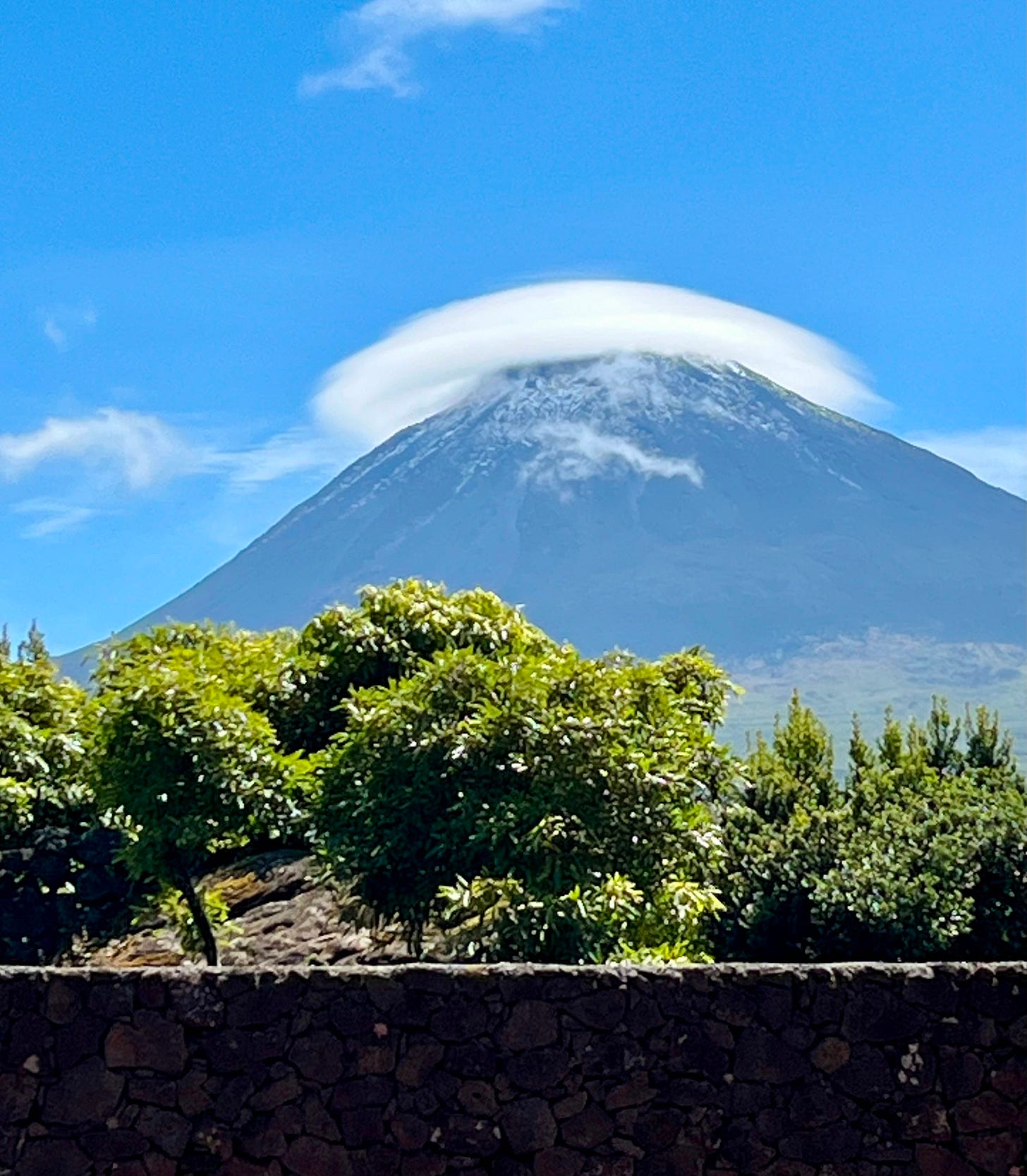
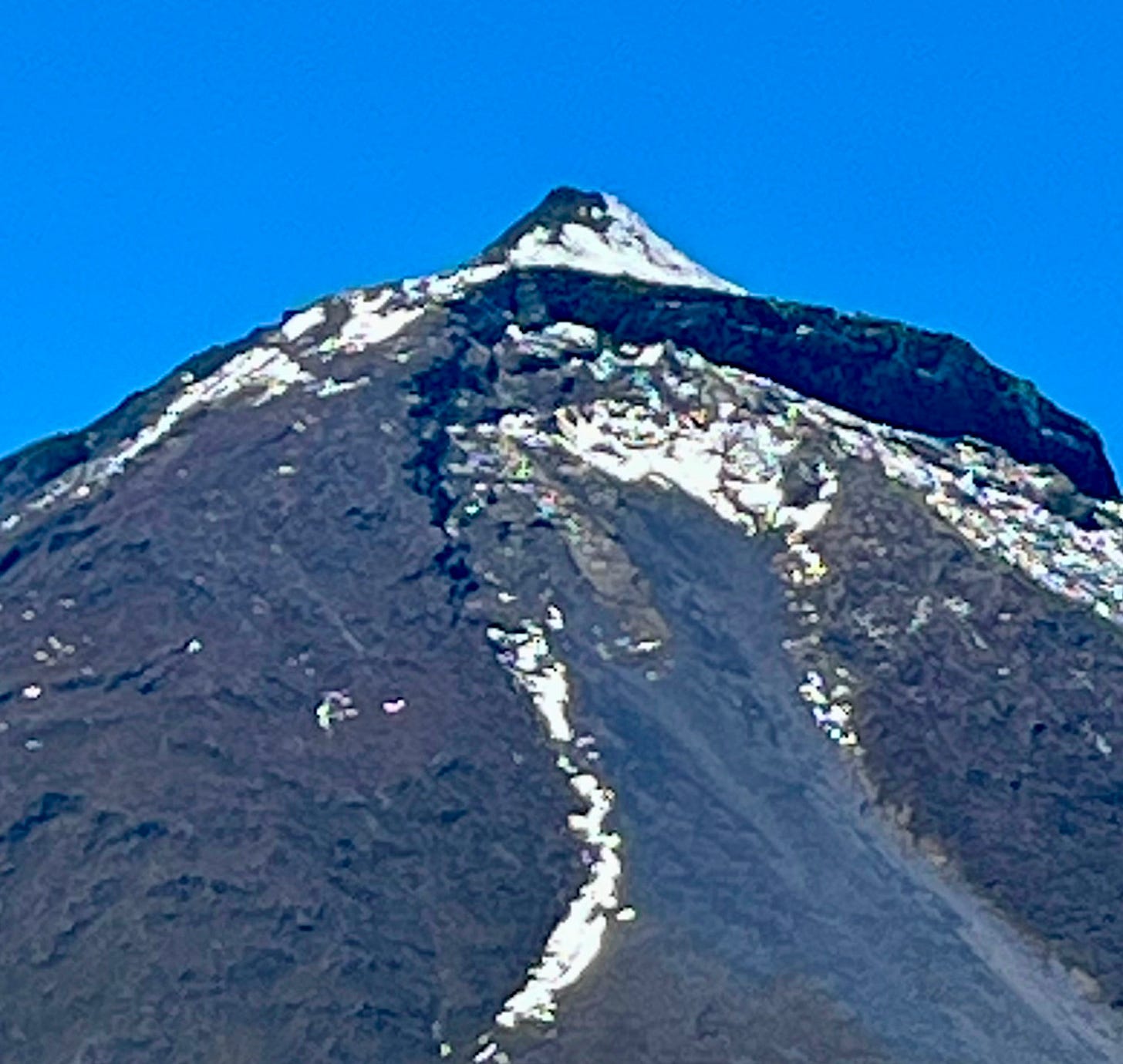
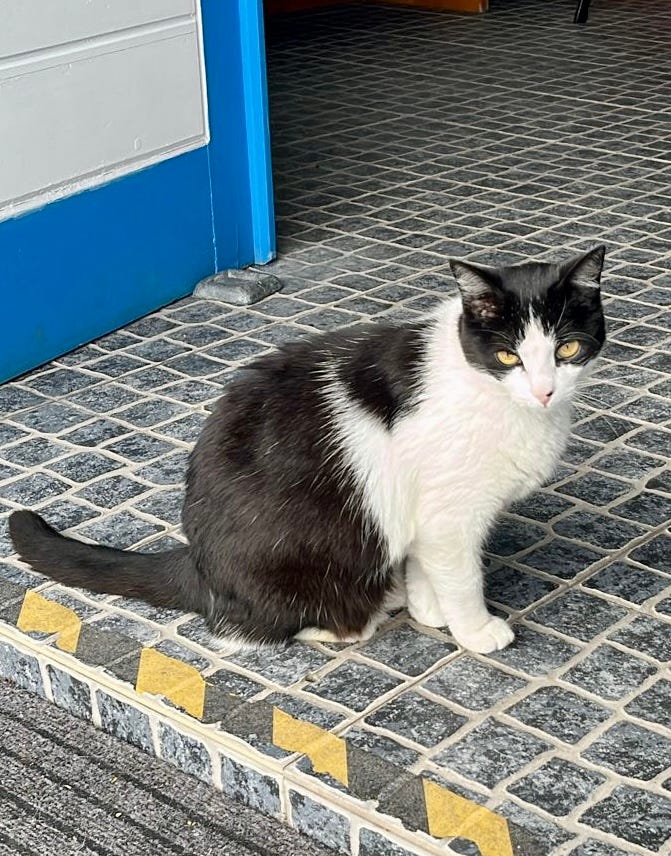

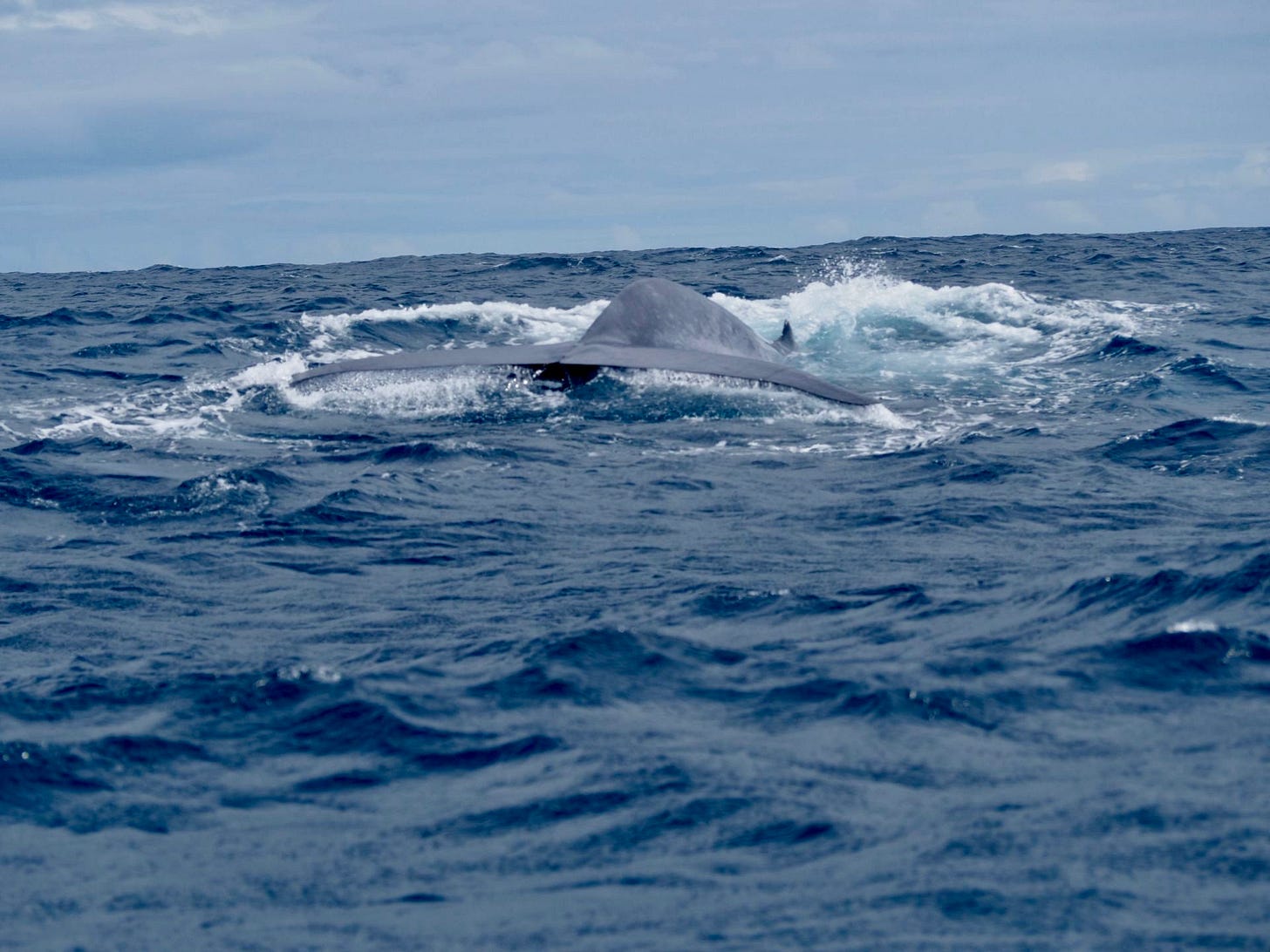

Martaaaa!!! Ussignur! Viva le balenottere, ma mi raccomando, guarisci presto. E per l’appunto, come dici tu, mai più davanti! ♥️
Ma che emozione leggerti Marta, però pat pat per la tua schiena